#didymiums
Text

two Lamproderma on a very small Didymium squamulosum, all perched on the point of a holly leaf.
by Barry Webb
#barry webb#iridescent#lamproderma#didymium squamulosum#myxomycota#slime mold#slime mould#forest floor#macro photography#myxomycetes#microbiota#microbiology#microorganisms
1K notes
·
View notes
Text
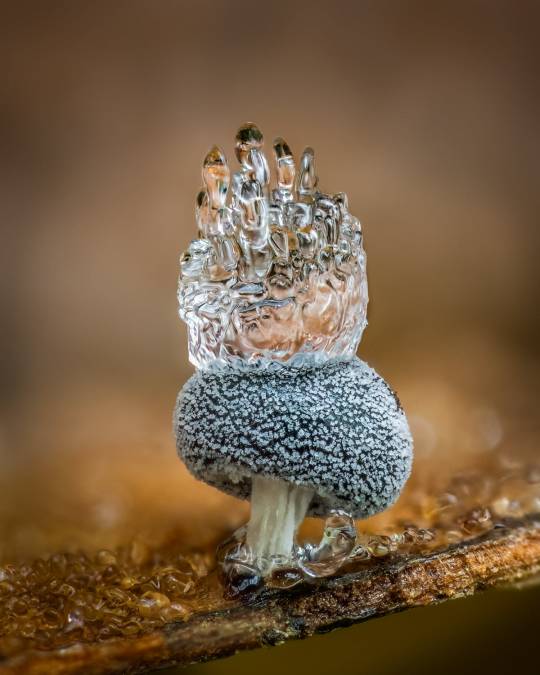
Didymium squamulosum with ice crown.
In Macro Photos, Barry Webb Captures the Fleeting, Otherworldly Characteristics of Slime Molds and Fungi

Metatrichia floriformis and physarum
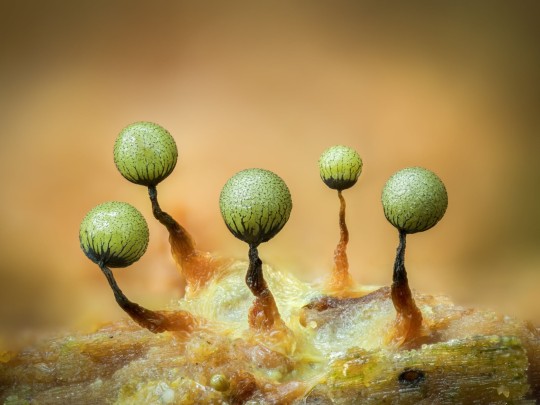
Cribraria

Craterium minutum
#barry webb#photographer#fungus#mushroom#fungi#didymium squamulosum with ice crown#macro photography#slime molds#metatrichia floriformis and physarum#cribraria#craterium minutum
205 notes
·
View notes
Text

Didymium clavus aka tiny cookies covered in powdered sugar
And here's a size reference of the specimen (they are the tiny white dots, if it's not obvious):

85 notes
·
View notes
Photo

I've seen quite a few slime moulds about recently. I think this one is Didymium melanospermum which likes growing on mosses. It is rather small.
642 notes
·
View notes
Note
Gemstones!
Sapphire: What makes them happiest? Is there a reason why?
I apologize I hadn't seen this till now but thank you so much ahhh!!

Two things make Norika is the happiest ! And while one she will happily admit, the other she is stubborn to..
Firstly! She is happiest when she is working with glass. In particular, her favorite part that always has her smiling and a glimmer of joy in her eyes is when she adds the color!
It's just incredibly fulfilling and satisfying to add color and basically life into a piece no matter what it is.
And then another moment of pure joy for her is to be with her two friends, Kham and Menyou~ As seen above! ( @sketchy-nick is the best thank u for the art)
She isn't allowed relationships with others so these two are a secret which is part of why she doesnt like to admit the joy she feels with them. The moments are not often but nonetheless they are precious to her.
Norika's life outside of work is quite strict and she has to keep up a façade to be safe. But glass and her secret friendships keep her going and give her the bliss and distractions she needs.
1 note
·
View note
Text
Didymium Glasses: Essential Eye Protection for Glass Artistry
Unleash your creativity safely with Didymium glasses from Phillips Safety! Crafted for glass artists, our Phillips 202, Sodium Flare Polycarbonate, and BoroTruView 3.0 lenses offer unparalleled protection against harmful UV and IR radiation. Enhance visibility during intricate processes with sodium flare filtration and superior color recognition. Lightweight and comfortable, these glasses ensure prolonged wearability without compromising safety.
Prioritize your vision in the studio and elevate your artistic journey. Visit Phillips Safety for a comprehensive range of eyewear designed for hot glass workers and lampworking artists. Call +1 866 575 1307 or email [email protected] for expert guidance and top-notch eye protection.
0 notes
Text

Fight of your lives
#jangart#afotd#achluophobia#achluophobia: fear of the dark#oc tag: Auer neodymius merc’her#oc tag: Atlas percival merc’her#Eyestrain#didymium#2023 art
1 note
·
View note
Photo

This is the same pair of earrings photographed underneath fluorescent light(top) and incandescent light(bottom) The dramatic color changes in this Didymium glass are caused by traces of rare-earth elements which produce this effect depending on if it’s under incandescent and fluorescent lights. This particular glass is called “count von count” and it’s made by @creationismessy These earrings are available in my shop today. #linkinbio👆 #flameworking #lampwork #glassart #alexisberger #ジュエリー #bijoux #schmuck #schmuckkunst #glaskunst #jewelry #handmadejewelry #earrings #handmadeearrings #didymium https://www.instagram.com/p/CpftiaOJ8Sa/?igshid=NGJjMDIxMWI=
#linkinbio👆#flameworking#lampwork#glassart#alexisberger#ジュエリー#bijoux#schmuck#schmuckkunst#glaskunst#jewelry#handmadejewelry#earrings#handmadeearrings#didymium
1 note
·
View note
Text

One from a month ago taken during a cold spell. A single Didymium squamulosum wearing an ice crown.
Photo by: @barrywebbimages
110 notes
·
View notes
Text

Slime Mold - Didymium sp. Prob. Didymium minus. Wunderlich County Park. Woodside, San Mateo Co., Calif.


8 notes
·
View notes
Text
Sketched some Creatures™ for practice (for the purpose of this exercise, slime mold is a Creature™)

Reference photos:
Arcyria denudata
Northern spring salamander
Iberian worm lizard
Didymium squamulosum
Eastern newt
3 notes
·
View notes
Text

Lamproderma scintillans fruiting on Didymium squamulosum
by Barry Webb
#lamproderma scintillans#didymium squamulosum#barry webb#slime mold#slime mould#myxomycota#iridescent#macro photography#nature#forest floor#microbiology#microbiota#microorganisms
405 notes
·
View notes
Photo

"Slime Mould Didymium Squamulosum On Holly Leaf"
By Andy Sands
Close-Up Photographer of the Year Awards
#andy sands#photographer#close-up photographer of the year awards#slime mould#didymium sqamulosum#holly leaf#nature
290 notes
·
View notes
Text
In Macro Photos, Barry Webb Captures the Fleeting, Otherworldly Characteristics of Slime Molds and Fungi
August 26, 2023
ThisIsColossal.com
Grace Ebert
All images © Barry Webb, licensed
Photographer Barry Webb (previously) continues his hunt for the speckled, glimmering, and ice-crested organisms that pop up near his home in South Buckinghamshire, U.K. Armed with a 90-millimeter macro lens, Webb ventures into woodlands and other natural areas where slime molds and fungi thrive. There, he zeroes in on their microscopic features, documenting their wildly diverse characteristics that often last for just a brief moment in time. Recent shots include a tuft of Muppet-like fuzz topping Metatrichia floriformis, a water droplet suspended between two cup-like Craterium minutum, and a cluster of Pink stemonitis filaments propped on spindly black legs.
Webb has won several awards in recent months, including from the Royal Photographic Society and Close-Up Photographer of the Year. Four of his photos will be featured at the Vienna Mushroom Festival next month, prints are available on his site, and you can find more of his work on Instagram.
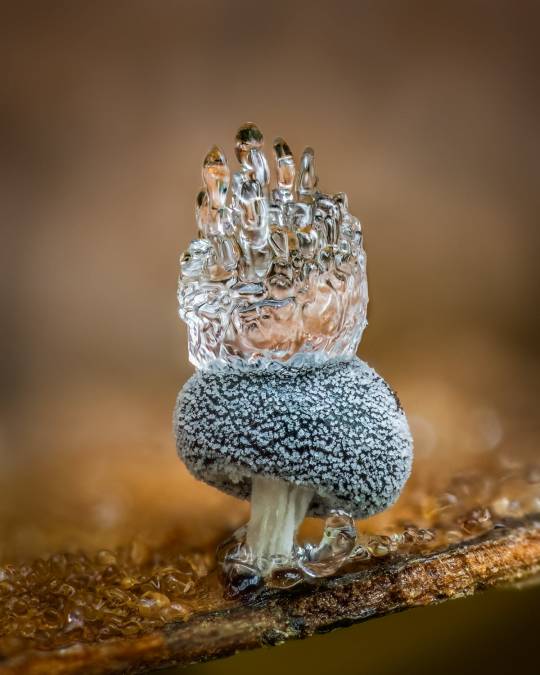
Didymium Squamulosum with ice crown
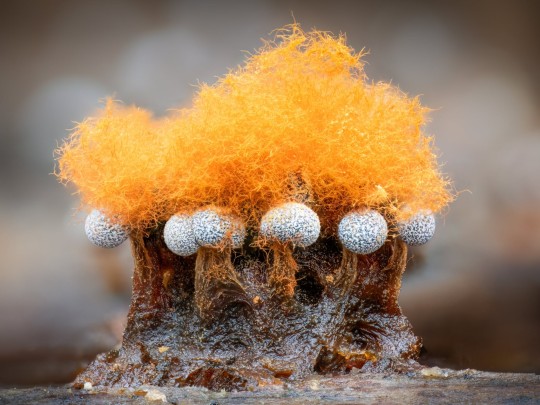
Metatrichia floriformis and physarum

Cribraria

Pink Stemonitis
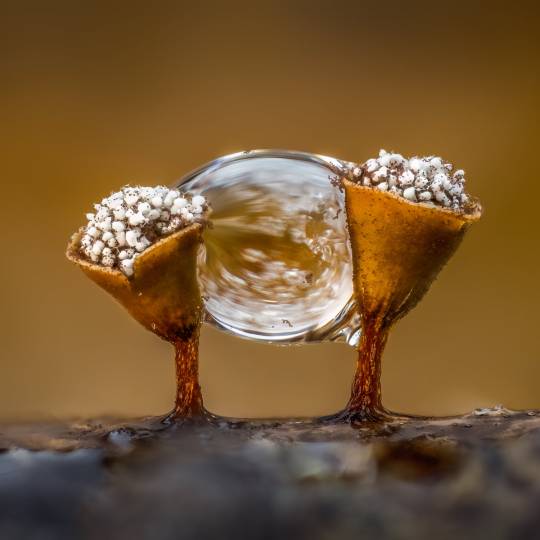
Craterium minutum
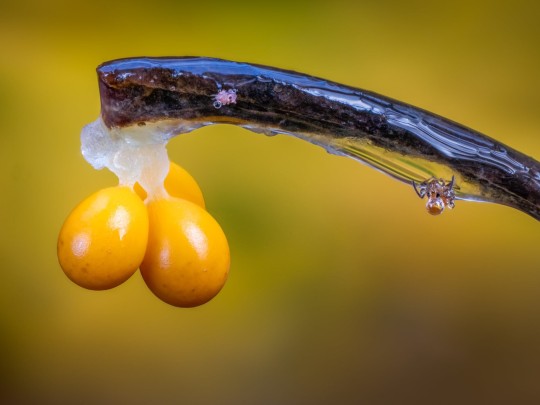
Leocarpus fragilis

Holly Parachute fungus Marasmius hudsonii
0 notes
Text
In Macro Photos, Barry Webb Captures the Fleeting, Otherworldly Characteristics of Slime Molds and Fungi | Colossal
AUGUST 26, 2023 GRACE EBERT
Didymium squamulosum with ice crown. All images © Barry Webb
Photographer Barry Webb (previously) continues his hunt for the speckled, glimmering, and ice-crested organisms that pop up near his home in South Buckinghamshire, U.K. Armed with a 90-millimeter macro lens, Webb ventures into woodlands and other natural areas where slime molds and fungi thrive. There, he…

View On WordPress
0 notes
Text
Show Me Your Metal (7)
Lanthanum (La): This element comes in at 57 on the Periodic Table. This metal is a rare element and, therefore, hard to discover, which, as we shall see, explains how it got its name. It was discovered through extractions from the mineral cerite. Mosander first discovered didymium mixed with cerite, which he separated into two different types in 1885. Cerite had first been discovered in 1751. Lanthanum’s turn had to wait until 1923. It had taken longer to find; it ‘lay hidden’ all this time. The name comes from the Greek ‘to escape notice’ (λανθάνειν). The element ‘krypton’ also takes its name from a Greek verb relating to being hidden (κρύπτειν – to hide), similarly reflecting its quality of being hard to discover (unless Superman’s in the way, oh, wait a bit that’s kryptonite!). krypton is a gas rather than a metal.
0 notes